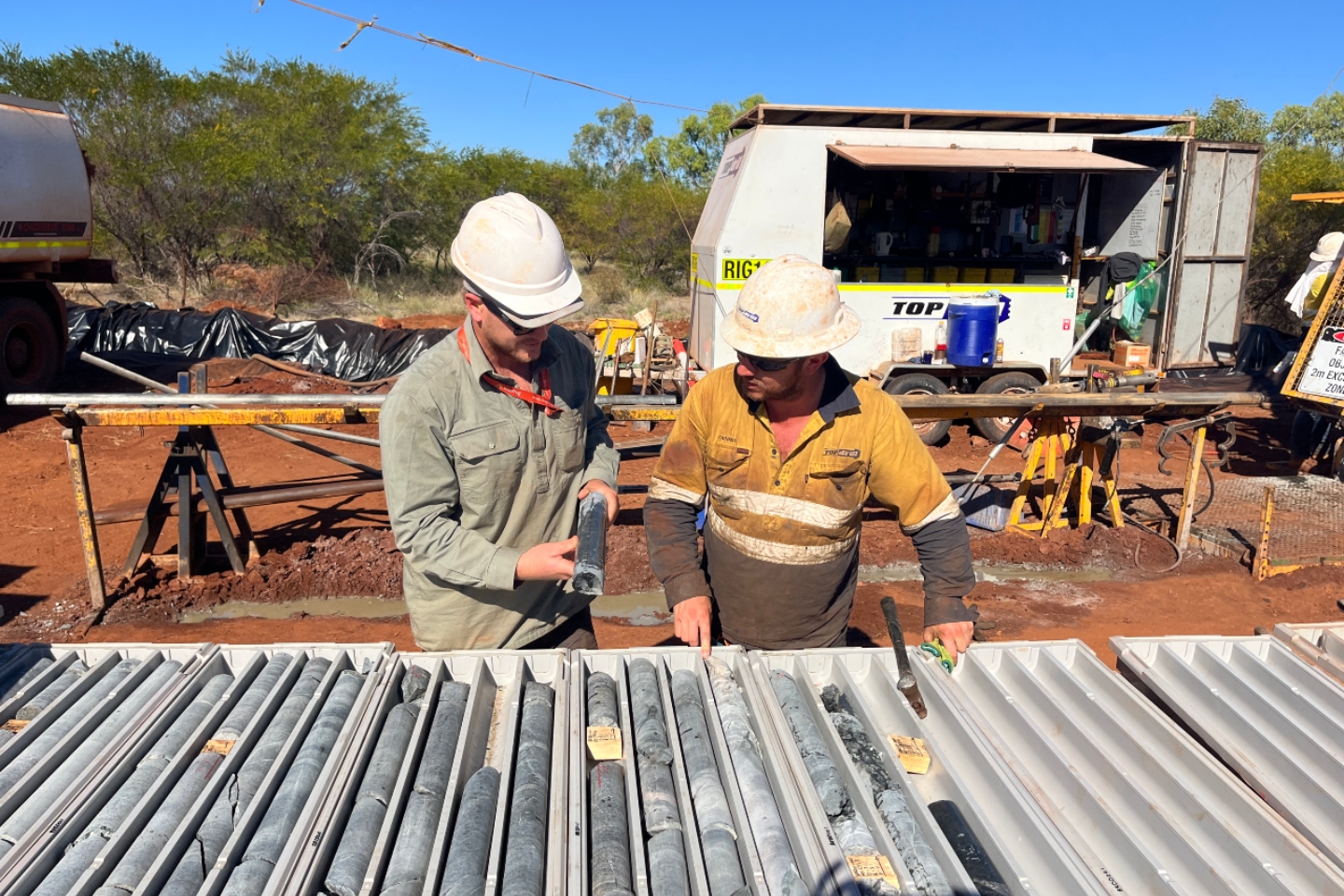Lycaon Resources has begun downhole electromagnetic surveys on two 800m deep diamond drillholes at its Bow River project in the East Kimberley region of Western Australia. The company is seeking to identify downhole and off-hole conductors potentially related to nickel-copper sulphide intercepts in both holes up to 45m wide which were also confirmed by pXRF. The results will inform the design of future deep drilling of the nickeliferous intrusion.

Lycaon Resources has begun downhole electromagnetic (DHEM) surveys on two 800m deep diamond drillholes at its Bow River project in the East Kimberley region of Western Australia.
The company is seeking to identify downhole and off-hole conductors potentially related to nickel sulphides which were noted in core logging. The DHEM program was prompted by significant nickel-copper sulphide drill intercepts noted in both holes, up to 45m wide which, in addition to the visual nickel and copper sulphide indications in drill-core, was confirmed by handheld portable x-ray fluorescence (XRF) analysis.
Interpretation shows the sulphide mineralisation correlates strongly with the upper limit of the geophysically modelled gravity anomaly between about 330-360m depth, although the remainder of the anomaly remains untested over its more than 1km strike extent.
Together with the assay data, the DHEM survey is expected to build greater geological confidence in the company’s mineralisation model and will inform future drilling.
Lycaon Resources technical director Tom Langley said: “The downhole electromagnetic surveys will help shape our next drilling program as we target further nickel-copper mineralisation at Bow River. The drilling identified significant intersections of nickel-copper sulphides of up to 45m wide. These results clearly demonstrate a fertile magmatic sulphide mineral system is present with the potential to host significant mineralisation.
Lycaon’s Bow River project is situated in the East Kimberley region of Western Australia. It encloses two well-known nickel-copper-cobalt sulphide prospects, the Salt Lick Creek intrusion, and the Bow River intrusion, both of which are sulphide-bearing and regarded as being similar in style and setting to Panoramic Resources’ Savannah mine, about 60km to the south.
The company says the 2014 discovery of the Savannah North resource, effectively a northerly depth extension of the existing main mine, dramatically increased the nickel-copper-cobalt resource, and it sees the analogous geological setting in its own tenure as encouraging, although previous drilling has been confined to a very small area of the Bow River mafic intrusive.
At Bow River, outcropping gossans and anomalous soil geochemistry have been mapped at surface over an area of 900m x 300m but while the intrusion surface expression has been the principal focus of historical exploration, little attention has been paid to the broader intrusive beneath surface cover and at depth.
Additionally, the company says that modern, more powerful, and more sensitive geophysical exploration methods are now being employed. These techniques, which include ground gravity surveys to detect discrete density anomalies at high resolution and greater depths below surface than previously possible, have only been undertaken for the first time by Lycaon.
Historical and recent ground gravity data was modelled by Southern Geoscience Consultants to better quantify the magnitude of the gravity anomaly, depth and size. The data also provides greater geological confidence in designing future drilling which is being planned to target the deeper part of the intrusion which is believed to be related to the highest density and most prospective gravity anomaly.
Recently completed diamond drilling stepped out 1.2km west from historical drilling which was centred on the surface nickel-copper gossan, and drilled to a depth of 800m, far exceeding the historical maximum depth 180m.
For Lycaon, the proposed drilling at Bow River will be critical in demonstrating its potential to host a major nickel-copper-cobalt resource analogous to Panoramic’s Savannah mine.
Is your ASX-listed company doing something interesting? Contact: matt.birney@businessnews.com.au














